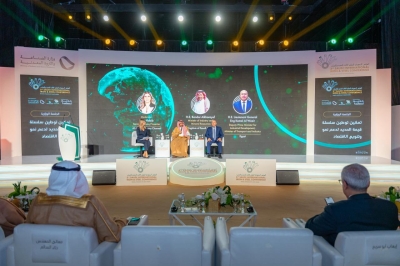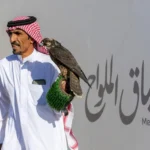Over three days, industry leaders along with thousands of participants from 50 countries reviewed the changing landscape of the global iron and steel market, geopolitical shifts, raw material availability, and global supply-demand dynamics at the Saudi International Iron and Steel Conference, which concluded its activities yesterday in the capital city of Riyadh.
Experts explored the massive investment opportunities in the Kingdom’s iron and steel sector
The conference, considered the largest of its kind in the Kingdom and strategically located in the heart of the most expanding and vibrant industrial markets in the Middle East, saw experts examine the enormous investment opportunities in the Kingdom’s steel sector, driven by government initiatives and massive infrastructure projects, in addition to the challenges facing the sector and proposed solutions to address them.
On this occasion, it was stated that the conference this year was held under the patronage of the Minister of Industry and Mineral Resources, with notable attendance from governmental and non-governmental entities from dozens of countries.
It was added that the conference discussed leading sustainable growth, as the Kingdom and the Arab region have witnessed 8.2% growth in the iron and steel sector in recent years; therefore, the theme of this year’s conference was “Leading Sustainable Growth.”
The conference, held at The Arena – Riyadh and organized by the Federation of Saudi Chambers, brought together major global steel and iron companies and investors to discuss the future of this sector and its pivotal role in achieving the objectives of Saudi Vision 2030.
During the conference, the Minister of Industry and Mineral Resources urged iron and steel companies to establish a national company for importing and supplying metal scrap, keeping pace with the developments and challenges facing the sector, which has a direct impact on improving costs and supporting the sector’s growth.
It was clarified that as part of the Ministry’s efforts to keep pace with rapid developments, the Industrial Development Center has been tasked with updating the national plan for restructuring the iron sector in line with local and global developments to enhance sustainability and improve the investment environment. Additionally, a study has been completed on the optimal options to cover the deficit in the local market and reduce imports of steel sheets, with investment opportunities estimated at approximately 60 billion riyals distributed across a range of important products for our local industry.
Saudi International Iron and Steel Conference
The Saudi International Iron and Steel Conference is a major industry event that highlights Saudi Arabia’s strategic expansion into the metals sector. It serves as a key platform for global industry leaders to discuss market trends, investment opportunities, and technological advancements. The conference is closely tied to the Kingdom’s Vision 2030, which aims to diversify the economy by developing the mining and heavy industry sectors.
Riyadh
Riyadh is the capital and largest city of Saudi Arabia, serving as the nation’s political and administrative center. Historically a walled oasis town, it was the historic seat of the Al Saud dynasty and was captured in 1902 by King Abdulaziz Al Saud, an event that marked the beginning of the unification of the modern Kingdom of Saudi Arabia. Since the discovery of oil, it has transformed into a modern metropolis and a major financial hub.
Kingdom’s iron and steel sector
The Kingdom’s iron and steel sector is a cornerstone of its modern industrial development, largely established and driven by its national company, Saudi Iron and Steel Company (HADEED). Fueled by the country’s vast natural gas resources, the sector has grown significantly to supply both the domestic construction market and international exports. This strategic industry is a key part of the nation’s broader economic diversification plans, such as Saudi Vision 2030, aiming to reduce reliance on oil.
Minister of Industry and Mineral Resources
The Ministry of Industry and Mineral Resources is a government body in Saudi Arabia, established to oversee the nation’s industrial and mining sectors. It was formed in 2019 from a reorganization of the former Ministry of Energy, Industry, and Mineral Resources, reflecting the Kingdom’s strategic focus on economic diversification under its Vision 2030 program. The ministry’s primary role is to develop policies and regulations to grow these non-oil industries and attract investment.
The Arena – Riyadh
The Arena is a major entertainment and sports venue located in Riyadh, Saudi Arabia. It was established as part of the city’s King Abdullah Financial District (KAFD) to host a wide variety of events, including concerts, esports tournaments, and professional sports. Since its opening, it has become a central hub for large-scale public gatherings, reflecting the Kingdom’s modern cultural and entertainment transformation under Vision 2030.
Federation of Saudi Chambers
The Federation of Saudi Chambers is the premier national organization representing the private business sector in Saudi Arabia. Established in 1980, it serves as the umbrella entity for all local chambers of commerce and industry across the Kingdom. Its primary role is to advocate for the interests of Saudi businesses and foster economic development in line with the nation’s strategic goals, including the Vision 2030 reform program.
Saudi Vision 2030
Saudi Vision 2030 is a strategic framework launched in 2016 by the Kingdom of Saudi Arabia to reduce its dependence on oil, diversify its economy, and develop public service sectors such as health, education, infrastructure, recreation, and tourism. The vision is built upon three main pillars: a vibrant society, a thriving economy, and an ambitious nation, with the goal of positioning the country as a global investment powerhouse and a hub connecting three continents.
Industrial Development Center
An Industrial Development Center is a government or public institution designed to promote industrial growth and economic diversification. These centers typically emerged in the mid-20th century, particularly in developing nations, as a key strategy for modernization and reducing dependency on agriculture. Their core functions include providing technical support, business incentives, and infrastructure to foster new industries and attract investment.






